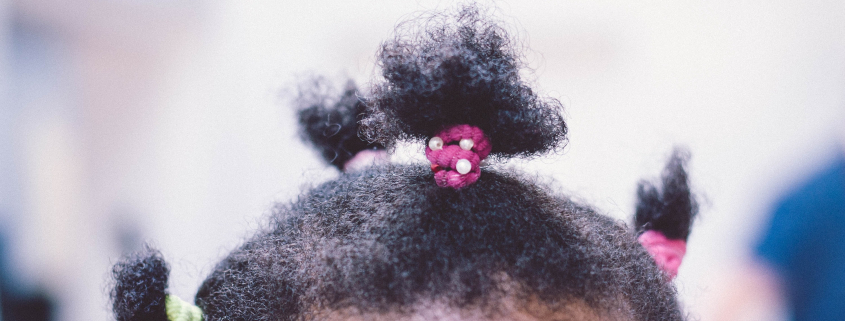The textured hair narrative must change

Most people of color with textured hair in predominantly white spaces receive many unsolicited questions and comments regarding their hair every day. Individuals usually express their fascination through questions such as, “Can you brush it?” or “My hair is almost as frizzy as yours today!” However, the most common and of all is “Can I touch it?”
These microaggressive comments stem from not only a strong “fascination” and ignorance but an even stronger implicit bias against textured hair.
The implicit bias against textured hair can be found in various aspects of society. Black women make up a majority of the hair care industry, as they spend nine times more money than the average consumer on hair and beauty products. However, in stores such as Target or Walmart, products for Black hair can be found in a small “ethnic” section, far away from the rest of the hair products in the “beauty and self-care” section. Moreover, many hair products are marketed as “anti-frizz” or “tame.” The reasoning for these particular targeting and segmentation marketing strategies is to penetrate desirable beauty standards to the public through a cultural implicit bias.
In 2016, the Perception Institute conducted the “good hair” study, which found tremendous political and social implications for Black women who wear their natural hair. The study demonstrated that races outside of Black women had an implicit bias toward textured hair. The women in the study rated textured hair as less beautiful, professional and sexy. Although Black women spend more time on their hair, they experience much more anxiety in regard to hair care.
According to the Perception Institute, “One in five [Black] women feel social pressure to straighten their hair for work — twice as many as white women.” This is an example of how Black women have not benefited from the new relaxed work cultures as other groups have. There are prevalent disparities in the standards for what is considered acceptable or professional between races in the workplace.
Recent research conducted at Duke University and published by the Social Psychological and Personality Science found that job recruiters demonstrated an implicit bias against Black women during job recruitment. Recruiters were more likely to view Black women wearing natural hairstyles as unprofessional and less competent, and they were less likely to ask Black women to return for an interview.
Hair discrimination is equally as prominent in schools. In 2018, a 16-year-old Black wrestler was forced to cut their dreads before their wrestling match to avoid being disqualified. The referee cut their hair with a pair of spare scissors until they were satisfied with the length.
In 2019, CNN reported a Georgia elementary school faced backlash for putting large posters of Black hairstyles along the school hallway that deemed which styles were “appropriate” and “inappropriate,” even though the school’s dress code did not mention hairstyles.
There is a history of natural hair being unacceptable and forbidden in the workplace and schools. For many Black individuals, wearing natural hair is empowering because it represents a refusal to conform to Western beauty standards. The afro was an incredibly important staple during the Civil Rights Movement and was heavily solidified as a symbol of political activism by public figures and performers such as Nina Simone, who paired her natural hair with songs about freedom and inequality in America. The afro has subsequently been viewed as a symbol of liberty and self-expression by Black Americans and remains a symbol of rebellion and non-conformism by many white Americans.
Government officials recently recognized this historical sentiment. In 2019, California was the first state to ban discrimination against hair and make a law that protects women who choose to wear their hair naturally at work. Other states have followed, including Massachusetts, which just passed a bill on March 30 banning hair discrimination.
It is crucial that we begin to strip natural textured hair of its implicit bias because that will allow us to have more united classrooms, workplaces and communities. Hair has never been “just hair” in this society. Amongst all races and ethnicities, hair is an indication of self-worth, culture, confidence, wisdom and so much more. This concept needs to be validated by all people. Non-textured hair is not a symbol of superior character or ability.
It is time to start consciously assessing and reflecting on your own biases and contributions to perpetuating a harmful beauty standard. In a society that claims it is working to become more inclusive, we cannot simply turn a blind eye to the mistreatment of people simply because they chose to wear their natural textured hair. Hair bias and discrimination are an important part of the narrative of racial disparities in work and academics spaces, and we must address it.

